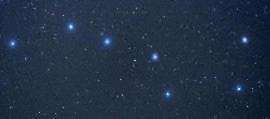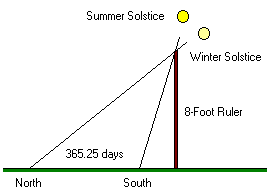The Origin of Chinese Yin Yang Symbol
Yin Yang Symbol, Tai-Chi & I-Ching
Where does the Yin Yang Symbol Come From? ![]() is a well-known Chinese Yin Yang symbol. Sometimes it's called Tai-Chi symbol. The Tai-Chi is from I-Ching. The I-Ching is the greatest foundation of Chinese philosophy. It's development is from the natural phenomena of our universe. Because I-Ching comes from nature, it should be easy.
is a well-known Chinese Yin Yang symbol. Sometimes it's called Tai-Chi symbol. The Tai-Chi is from I-Ching. The I-Ching is the greatest foundation of Chinese philosophy. It's development is from the natural phenomena of our universe. Because I-Ching comes from nature, it should be easy.
The Chinese characters of I-Ching are
![]() The second character means a book, a profound book. The first character means ease or change. Since I-Ching is
easy, some people call it as "The Book of Ease" or "The Book of Changes". The original Chinese character of
The second character means a book, a profound book. The first character means ease or change. Since I-Ching is
easy, some people call it as "The Book of Ease" or "The Book of Changes". The original Chinese character of ![]() is
is ![]() , which is a symbol combining the sun (top) and moon (bottom). It's easy
for people to understand the philosophy by talking about the sun (Yang), moon
(Yin) and universe. After observing the universe, ancient Chinese found that the universe is changing every day. Although it changes easily every day, it also has seasonal and annual cycles. From these cycles the unchanging rules are created. However, it's not easy to use the
, which is a symbol combining the sun (top) and moon (bottom). It's easy
for people to understand the philosophy by talking about the sun (Yang), moon
(Yin) and universe. After observing the universe, ancient Chinese found that the universe is changing every day. Although it changes easily every day, it also has seasonal and annual cycles. From these cycles the unchanging rules are created. However, it's not easy to use the
![]() method to find the unchanging rules from the universe and apply on human
activities. That's why some people think I-Ching is easy and some don't.
method to find the unchanging rules from the universe and apply on human
activities. That's why some people think I-Ching is easy and some don't.
The Origin of Yin Yang Symbol

The Dipper at Night
By observing the sky, recording the Dipper's positions, and watching the shadow of the Sun from an 8-foot (Chinese measurement) pole, ancient Chinese determined the four directions. The direction of sunrise is the East; the direction of sunset is the West; the direction of the shortest shadow is the South and the direction of the longest shadow is the North. At night, the direction of the Polaris star is the North.
They noticed the seasonal changes. When the Dipper points to the East, it's spring; when the Dipper points to the South, it's summer; when the Dipper points to the West, it's fall; when the Dipper points to the North, it's winter.

When observing the cycle of the Sun, ancient Chinese simply used a pole about 8 feet long, posted at right angles to the ground and recorded positions of the shadow. Then they found the length of a year is around 365.25 days. They even divided the year's cycle into 24 Segments, including the Vernal Equinox, Autumnal Equinox, Summer Solstice and Winter Solstice, using the sunrise and Dipper positions.
They used six concentric circles, marked the 24-Segment points, divided the circles into 24 sectors and recorded the length of shadow every day. The shortest shadow is found on the day of Summer Solstice. The longest shadow is found on the day of Winter Solstice. After connecting each lines and dimming Yin Part from Summer Solstice to Winter Solstice, the Sun chart looks like below. The ecliptic angle 23 26' 19'' of the Earth can be seen in this chart.
The Hidden Meanings of Yin Yang Symbol
The Ecliptic is the Sun's apparent path around the Earth. It's tilted relative to the Earth's equator. The value of obliquity of the Ecliptic is around 23 26' 19'' in the year 2000.

By rotating the Sun chart and positioning the Winter Solstice at the bottom, it will look like
this ![]() .
The light color area which indicates more sunlight is called Yang (Sun). The dark color area
has less sunlight (more moonlight) and is called Yin (Moon). Yang is like a man. Yin is like
a woman. Yang wouldn't grow without Yin. Yin couldn't give birth without
Yang. Yin is born (begins) at Summer Solstice and Yang is born (begins) at Winter Solstice.
Therefore one little circle Yin is marked on the Summer Solstice position.
Another little circle Yang is marked on the Winter Solstice position. These two little
circles look like two fish eyes.
.
The light color area which indicates more sunlight is called Yang (Sun). The dark color area
has less sunlight (more moonlight) and is called Yin (Moon). Yang is like a man. Yin is like
a woman. Yang wouldn't grow without Yin. Yin couldn't give birth without
Yang. Yin is born (begins) at Summer Solstice and Yang is born (begins) at Winter Solstice.
Therefore one little circle Yin is marked on the Summer Solstice position.
Another little circle Yang is marked on the Winter Solstice position. These two little
circles look like two fish eyes.

In general, the Yin Yang symbol is a Chinese representation of the entire celestial phenomenon. It contains the cycle of Sun, four seasons, 24-Segment Chi, the foundation of the I-Ching and the Chinese calendar.
Copyright © 1999- Allen Tsai | Chinese Fortune Calendar
Who Drew the frist Ying Yang Symbol?
Ying Yang Diagram on Pottery
 The Yin Yang Symbol is called Tai Chi Diagram in China. This is because the Tai Chi philosophy is widely spread by I-Ching and Taoism. Who Drew the first Ying Yang Symbol? We often heard the credit goes to Fu-Xi, the investor of I-Ching, or Laozi, the founder of Taoism. Actually, there is no answer for who drew the first Tai Chi diagram. The earliest evidence of Tai Chi diagram can be seen in the Chinese museum. The Ying Yang Symbols display on the unearthed potteries, which were made around 2600 B.C.
The Yin Yang Symbol is called Tai Chi Diagram in China. This is because the Tai Chi philosophy is widely spread by I-Ching and Taoism. Who Drew the first Ying Yang Symbol? We often heard the credit goes to Fu-Xi, the investor of I-Ching, or Laozi, the founder of Taoism. Actually, there is no answer for who drew the first Tai Chi diagram. The earliest evidence of Tai Chi diagram can be seen in the Chinese museum. The Ying Yang Symbols display on the unearthed potteries, which were made around 2600 B.C.
Ying Yang Diagram with Two Snakes
Many Chinese minority cultures were full of religion, witchcraft, prayer, oracle, medicine, recording history, and offering sacrifices to gods. One old manuscript documented the drawings of the Yin Yang Symbol in double snakes. This probably is related to Nu-Wa in Chinese ancient mythology. Nu-Wa is a female and the creator of humans. She molded humans from clay after trying 70 times. Fu-Xi, the creator of the I-Ching, is her brother. Fu-Xi and Nu-Wa are also husband and wife. Fu-Xi was in charge of the decoration on the ground. Nu-Wa was in charge of the painting on the sky. Both of them are half-snake and half-humans. The snakes in the Tai Chi diagram represent two of them. One theory about the half-snake is connected to the snake in the Garden of Eden in the Bible. Snake makes them smarter. That minority culture should begin more than 4000 years ago.
Old Ying Yang Diagram
One book of early Ming Dynasty (1380 AD) contains a Yin Yang Diagram. The writer, Mr. Zhao, said he got it from his friend, Mr. Tsai. His friend had that diagram from a hermit, Mr. Chen. The book mentioned the diagram contains the I-Ching, Yin Yang, and Pa-Kua (eight trigrams) philosophy. Tai Chi produces two forms, named Yin and Yang. These two forms produce four phenomena. Adding another Yin and Yang on the four phenomena, we have the eight trigrams (Pa-Kua). The original diagram is named the "Natural River Diagram of the Universe". Later, the diagram is called the "old Tai Chi Diagram". The fish eyes of this diagram are not round.
Lai's Ying Yang Diagram
Mr. Lai (1525-1604) in Ming Dynasty drew his version of Tai Chi diagram after studying 29-year I-Ching. There is a center circle inside the Yin Yang symbol. The center circle is called Tai Chi. Yin and Yang are around the Tai Chi. Mr. Lai had scientific mind about the universe. He had three-dimension concept about Tai-Chi ball. You need to image this diagram in three dimensions.
First Ying Yang Diagram with Two Fish
The first Tai Chi diagram with two fish appears in the book of Mr. Chang (around 1135 AD), an astronomer and mathematician, in the Late Sung Dynasty. The two-fish Tai Chi diagram is derived from the Pre-heavenly Pa-Kua diagram. A Taoist, Mr. Chen (871-989 AD, more than 100 years old), was the earliest teacher of the Pre-heavenly Pa-Kua diagram. Therefore, we know the first Yin Yang fish diagram was invested around the Early Sung Dynasty (960 AD).
Ying Yang Symbol Discussions
In 2008, Dr. Stefan Jaeger created Yin Yang Models based on daylight hours, which are connected with shadow lengths, at Beijing, China. The shape of the Yin Yang diagram at latitude 68 degree is very close to the Old Tai Chi diagram. He published his mathematical daylength model for the Yin Yang symbol in 2011.
Dr. Jaeger's article, more detail discussion for the Diagram of Six Concentric Circles and translated languages are in the Part 2 of Where does the Yin Yang Symbol come from?
This article and diagram of "Where does the Yin Yang Symbol come from?" has been reprinted by professors around the world to their students. The article is reprinted in the book of "Pi: A Biography of the World's Most Mysterious Number" by Dr. Alfred S. Posamentier and Dr. Ingmar Lehman.
Dr. Gregory K. Lee also reprinted this page in his book of "Student Survival Guide for Physical Geography".
The book of "The science of Planetary Signatures in Medicine - Restoring the Comic Foundations of Healing" by Jennifer T. Gehl and Dr. Marc S. Micozzi also refers this page.
